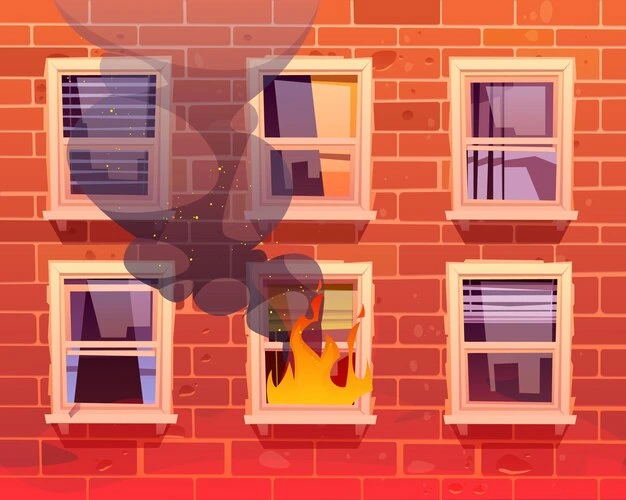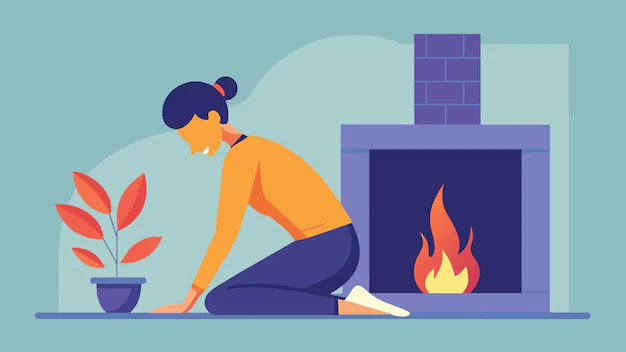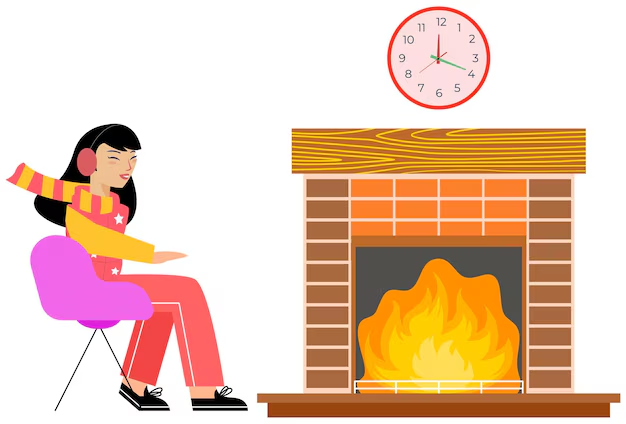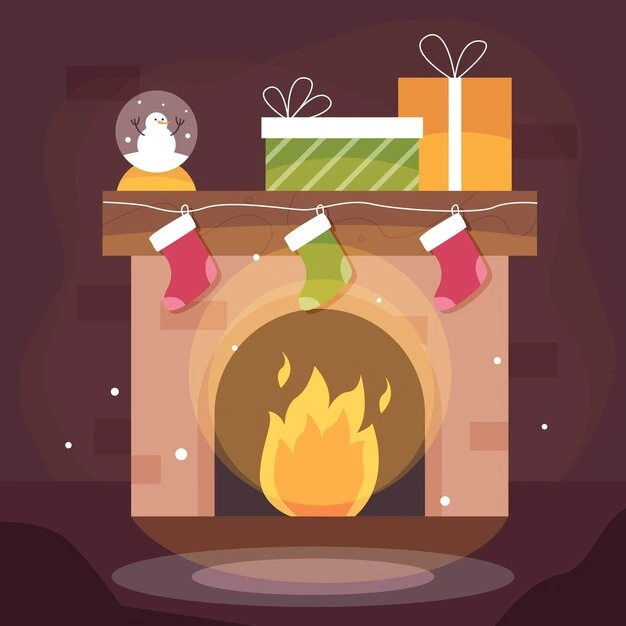Introduction: Why Chimney Cleaning Matters More Than You Think
A clean chimney means a safer, more efficient home, and a wood burning stove chimney adds warmth, charm, and comfort to any home. Over time, soot and creosote buildup inside your stove’s chimney can become a serious fire hazard and lower your stove’s heating efficiency.
If you’re wondering how to clean a wood burning stove chimney without hiring a professional every time, this guide is for you. We’ll walk you through what causes chimney buildup, how to spot signs, when it’s time to clean, and give you a complete step-by-step cleaning process to handle the it yourself. Whether you’re a homeowner or working woman trying chimney cleaning for the first time during your house cleaning routine, you’ll find everything you need right here.
Understanding the Importance of Chimney Cleaning

Before cleaning your chimney, it’s important to understand what builds up inside it and makes it harder to clean, this helps you get the best results and avoid surprises.
What is Creosote?
Creosote is a sticky, tar-like residue that forms when wood burns incompletely. It accumulates along the walls of the chimney flue and becomes more difficult to remove over time. If not cleaned regularly, creosote becomes highly flammable.
Why Soot Accumulates
Soot is a black, powdery substance made mostly of carbon. Unlike creosote, soot is lighter and easier to clean but still contributes to blockages that affect airflow and safety.
The Risks of a Dirty Chimney
- Chimney fires: Highly flammable creosote can ignite, causing chimney fires.
- Poor ventilation: A blocked chimney reduces airflow, causing smoke to re-enter your living space.
- Reduced efficiency: Your stove has to work harder and burn more fuel to produce the same heat.
Understanding these basics is the first step in learning how to clean a wood burning stove chimney and also helps you see why regular chimney cleaning is essential for both safety and efficiency.
How Often Should You Clean Your Wood Stove Chimney?
It is recommended that you should go for chimney inspections at least once a year. If you use it daily, consider not only cleaning your chimney, but also look for cleaning chimney liners.
As a general rule:
- Clean your chimney at least once a year, or
- After every cord of wood burned,
- Or if you notice signs like poor draft, excessive smoke, or a burning smell when using the stove.
Signs It’s Time to Clean Your Wood Stove Chimney
Sometimes the buildup isn’t visible, but here are some red flags:
- A strong smoky odor when the stove is not in use
- Smoke leaking into your home when burning wood
- Difficulty starting or maintaining a fire
- Black, tar-like residue visible around the stove pipe
- Soot falling from the chimney when tapping it
Don’t ignore these symptoms understanding how to clean a wood burning stove chimney can make chimney cleaning safer, easier, and more efficient.
Bonus Tip: W
How to Clean a Wood Burning Stove Chimney: Step-by-Step Guide

This step by step guide will show you how to clean chimney in the best way-
Step 1 – Tools and Supplies You’ll Need
Before you start chimney cleaning, gather the right tools for a safe and effective DIY cleaning.
Basic Equipments:
- Chimney brush (appropriate size for your flue)
- Flexible fiberglass extension rods
- Dust mask or respirator
- Safety goggles
- Work gloves
- Drop cloth or tarp
- Flashlight or headlamp
Optional (but Helpful) Tools:
- Vacuum (with HEPA filter)
- Small hand brush
- Screwdriver (for opening stove components)
- Creosote remover logs (for light maintenance between cleanings)
Tip: Use a brush that can clean your chimney well.
Step 2 – Protect Your Home and Yourself
Before you begin:
- Remove any nearby furniture or rugs.
- Wear old clothes, gloves, a dust mask, and eye protection (if you feel so)
- Ensure your stove is completely cool before cleaning.
- Allow the stove to cool completely (at least 12 hours).
Step 3: Access the Chimney (Cleaning)
There are two main ways to access the chimney:
Top-Down Cleaning (From the Roof)
- Safely use a ladder to access the chimney cap.
- Remove the cap and insert the chimney brush with rods.
- Scrub vigorously up and down the chimney walls.
- Add more rods as needed to reach the full depth.
- Let loosened soot fall to the bottom of the flue.
Only attempt this if you’re comfortable with heights and have a secure ladder setup.
Bottom-Up Cleaning (From Inside the Stove)
- Open the stove and remove the baffle plate if needed.
- Insert the chimney brush upward into the flue.
- Scrub the interior walls in sections.
- This method is safer for DIYers but may be less effective for long chimneys.
Step 4: Use the Chimney Brush
- Attach the brush to the first rod.
- Push the brush up the chimney flue, scrubbing with firm, even pressure.
- Continue adding rods as needed until you reach the top.
- Reverse direction to scrub as you pull the brush back down.
Step 5: Clean the Stove Pipe and Firebox
Once the chimney is clean:
- Use a wire brush to scrub inside the stove pipe.
- Vacuum out the firebox, ash pan, and surrounding area.
- Check for cracks, rust, while you’re at it.
Step 5 – Dispose of the Debris
- Use a vacuum or scoop to collect all debris.
- Bag it and dispose of it properly.
- Avoid using a household vacuum, ash can damage it.
Step 5: Inspect and Reassemble
- Shine a flashlight up the flue to ensure no buildup remains.
- Reattach the stovepipe and secure all connections.
- Test your stove to ensure proper airflow and function.
Tips to Maintain a Clean Chimney Year-Round
1. Burn Only Seasoned Hardwood
- Use dry wood with low moisture content (less than 20%).
- Avoid burning softwoods or wet logs—they produce more creosote.
2. Control Your Fire Temperature
- Keep fires hot and steady to reduce incomplete combustion.
- Avoid fires, which create more creosote.
3. Use Creosote Logs as Preventive Maintenance
- Burn creosote cleaning logs monthly during heat season.
- These don’t replace manual cleaning but help reduce buildup.
4. Schedule Annual Inspections
Even if you DIY your chimney cleaning, hire a professional once a year to inspect the chimney’s structure and safety.
By following these tips, you can keep buildup to a minimum and ensure your stove runs safely all year. But even with good habits, how to clean a wood burning stove chimney remains essential information. Combine these practices with regular chimney cleaning to protect your home and get the best performance from your wood stove.
Tips to Prevent Future Buildup
Cleaning is important, but prevention is even better. Here’s how to reduce creosote buildup and keep your chimney cleaner for longer.
Burn Dry, Seasoned Wood
- Wood should be split and dried for at least 6–12 months.
- Wet or green wood burns inefficiently and creates more creosote.
Maintain a Hot Fire
- Fires that smolder or burn low produce more smoke and creosote.
- Hotter fires with good airflow burn more completely.
Use a Chimney Thermometer
- Keeps you in the ideal burning range (250°F–450°F) to minimize creosote.
Schedule Routine Checks
Even if you’re cleaning it yourself, get a professional inspection every 1–2 years to ensure your chimney is in good condition.
With the right habits, you can reduce buildup and make each cleaning easier. Still, no matter how careful you are, chimney cleaning remains essential. These preventive tips work best when combined with proper care and understanding of how to clean a wood burning stove chimney.
DIY vs. Professional Chimney Cleaning – When to Call for Help
While learning how to clean a wood burning stove chimney yourself is empowering, there are times when a pro is the better choice.
Call a professional if:
- You see glazed creosote (shiny, tar-like) that won’t come off
- There are blockages or animals in the flue
- Your chimney hasn’t been cleaned in several years
- You’re unsure of the chimney’s structure or access points
Professionals have specialized tools and experience to tackle tough jobs and ensure safety.
Wood Stove Maintenance Checklist for Winter Prep

When cold weather sets in, your wood-burning stove becomes the heart of your home—keeping your space warm, cozy, and inviting. But before you light that first fire of the season, a thorough winter prep checklist ensures your stove runs safely and efficiently. Regular maintenance also helps reduce the chances of dangerous creosote buildup, which is why knowing how to clean a wood burning stove chimney is essential.
Use this step-by-step winter prep checklist to get your stove ready:
1. Inspect the Chimney from Top to Bottom
Before anything else, check the chimney’s interior and exterior:
- Look for visible blockages like bird nests, leaves, or debris.
- Shine a flashlight into the flue and inspect for soot or creosote buildup.
- Check for signs of damage such as cracks, rust, or loose bricks.
If creosote is thicker than ⅛ inch or flaky soot is falling into your stove, it’s time for a deep clean. This reinforces the importance of knowing how to clean a wood burning stove chimney regularly.
2. Clean the Chimney Thoroughly
Creosote buildup is a major fire hazard. Cleaning the chimney is crucial:
- Use a chimney brush suited to your flue size and shape.
- Sweep from the top down (if you’re comfortable on the roof) or from the bottom up with a flexible rod system.
- Wear a dust mask and safety glasses during this process.
- Dispose of creosote and soot safely.
Tip: Consider a mid-season sweep if you use your stove daily—clean chimneys mean safer, more efficient heating.
3. Check the Firebox for Cracks and Residue
The firebox is where your logs burn. Inspect it carefully:
- Remove all ashes and unburnt debris.
- Look for cracks in the lining or bricks.
- Clean any soot stuck to the walls.
Use a metal ash container with a lid for safe disposal. Leave about an inch of ash for better insulation and easier relighting.
4. Clean the Stove Pipe and Connector
The stovepipe carries smoke from your stove to the chimney. It often collects creosote:
- Detach and inspect for thick buildup.
- Brush out the interior of the pipe.
- Reseal joints if you notice loose connections.
This step goes hand in hand with how to clean a wood burning stove chimney, especially when aiming for complete combustion and optimal airflow.
5. Examine and Replace Gaskets
The gaskets (rope seals) around the stove door and ash drawer can wear out:
- Do the dollar bill test: close a dollar bill in the door—if it pulls out easily, replace the gasket.
- Worn seals let air in, reducing efficiency and increasing creosote buildup.
New gaskets help keep the burn clean and controlled, which reduces the load on your chimney.
6. Clean the Glass Door (If Applicable)
Soot-stained glass reduces your view of the fire and signals incomplete burning:
- Use a soft cloth with stove glass cleaner or vinegar-water mix.
- For tough stains, a paste of baking soda and water can help.
Clean glass is not only aesthetic—it’s a sign your stove is working efficiently.
7. Check the Air Vents and Controls
Clogged or stuck air vents lead to poor airflow and smoky fires:
- Test air intake and exhaust controls.
- Clean out cobwebs, ash, and dust that may have accumulated over summer.
Ensuring proper airflow reduces the risk of incomplete combustion and lowers the need to frequently revisit how to clean a wood burning stove chimney.
8. Burn Only Seasoned Wood
The kind of wood you use directly affects stove performance:
- Burn only well-seasoned hardwoods (dried for 6–12 months).
- Avoid painted, treated, or green (wet) wood.
- Store logs off the ground and covered from rain or snow.
Using dry wood reduces creosote formation and makes chimney cleaning easier and less frequent.
9. Test Carbon Monoxide and Smoke Detectors
Before using your wood stove for the winter, ensure safety systems are in place:
- Replace batteries in smoke and CO detectors.
- Place detectors near the stove and sleeping areas.
This simple step could save lives, especially when using any solid fuel appliance.
Bonus Tip: Thinking about making your home shine. Check out our cleaning guide and cleaning checklist to make your home sparkle.
Need for Deep Cleaning in Your Home
If you are living in Kelowna, cleaning the wood burning stove chimney is a must in your to-do-list. You can also look for cleaning services in Kelowna for deep cleaning your home.
If you’re investing time in maintaining your home whether it’s learning how to clean a wood burning stove chimney for safety, or scheduling seasonal deep cleans, don’t overlook your wooden chimney. It’s just important as any other corner of your home.
That’s where professional cleaning services like Mesh Maids can help. Our professional team is trained to deep clean your home thoroughly, tackling all with precision and care. Whether you’re in need of same day cleaning, moving, or simply want a healthier environment for yourself, Mesh Maids delivers a clean you can trust.
Contact us whenever you feel stuck in cleaning your home.
Conclusion: A Clean Chimney Is a Safe Chimney
Keeping your wood stove chimney clean is all about safety, and efficiency. By learning how to clean a wood burning stove chimney, you take control of your home’s safety while making your home environment safe.
This guide gives you practical knowledge on how to clean a wood burning stove chimney. Whether you are cleaning the chimney yourself or call in a professional for support, maintaining a clean chimney will help you enjoy your wood-burning stove with confidence all time long.
If it is too hard for you to clean, book your cleaning with Mesh Maids, that will not only gives you a clean home but also keeps your home safe and healthy.
